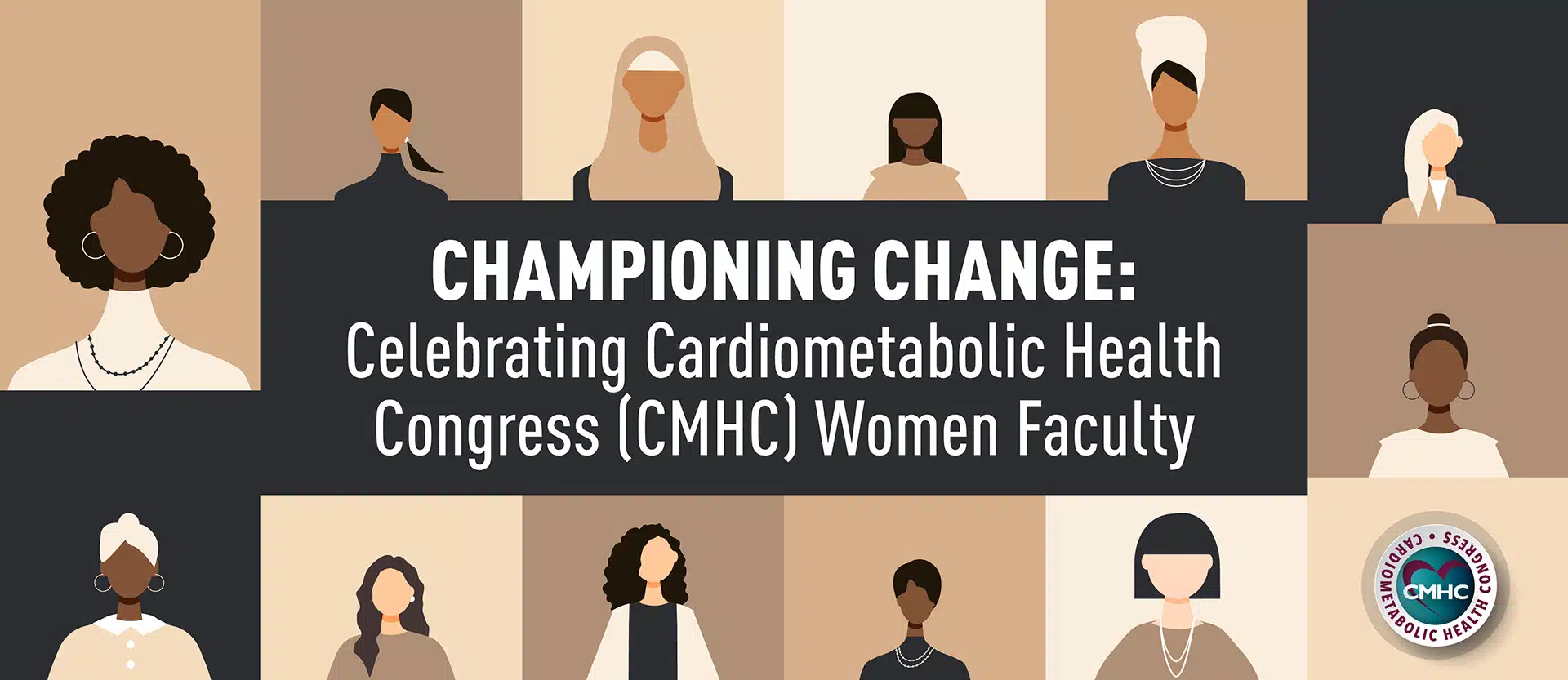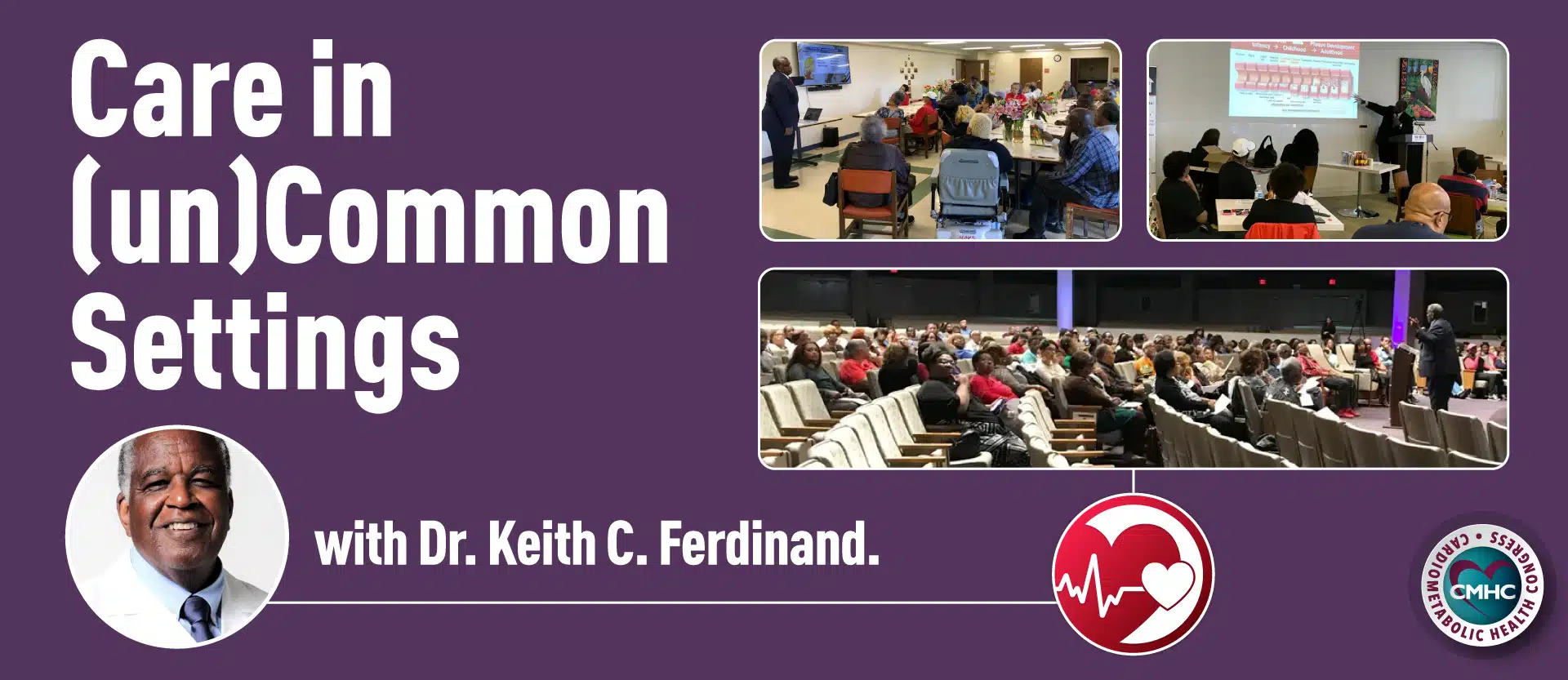This February the intersection of American Heart Health Month and Black History Month underscores the deeply profound and layered legacy of health inequality in America—which, sadly, persists to this day. Black History Month is a poignant backdrop to the alarming rise in obesity and type 2 diabetes, particularly among those of marginalized populations. This troubling trend has cemented the 100-year reign of cardiovascular diseases (CVD) as the #1 killer in America.
When we explore the three traditional cardiometabolic risk factors (obesity, type 2 diabetes, and dyslipidemia) and the emerging cardiometabolic risk factor of non-alcoholic fatty liver disease, we unearth a complex interplay of societal, biological, genetic, and environmental factors. Furthermore, research on intergenerational trauma shows how stressors can pass on to the next generation, setting the stage for generations of health inequality.
#1 Peeling back the layers of Social Determinants of Health (SDOH)
Despite medicine and science advancing leaps and bounds, in 2024, cardiovascular disease remains the leading cause of death in America. Moreover, it hits some groups harder than others; 45% of Black adults have CVD as opposed to 37% of White adults. Two major risk factors for CVD are hypertension and diabetes, which also place a heavier burden on minority groups.
Researchers emphasize that health disparities are better explained by the social constructs of race and ethnicity than genetic differences and are attributed to a complex web of social factors. Societal issues include all the structural problems and isms (racism, sexism, classism, etc.), and the interplay of these various factors.
When researchers examined racial/ethnic health disparities through a broader, more upstream SDOH lens, the 5 distinct SDOH domains: economic stability; neighborhood and physical environment; education; community and social context; and healthcare system, revealed a link between structural racism and CVD. In light of their findings, researchers proposed a set of research and policy recommendations to improve understanding and address these health inequities.
SDOHs are increasingly becoming more mainstream, and are part of medical education. However, there is a standards gap in SDOH data and a lack of actionability. A modern practitioner’s toolkit must include practical resources to gather, report, and use SDOH data to close the health equity gap.
A set of billing (Z CODES) now exists to capture and store SDOH data, but the data is painfully underutilized. A new study suggests that generative AI could parse unstructured data in clinicians’ chart notes for SDOH. The problem is, there are privacy and consent concerns, risk of introducing bias, and matter-of-fact limits on current AI capabilities.
Digger deeper into SDOHs, we find the Developmental Origins of Health and Diseases (DOHaD), which explain that the external environment (food, exposure, stress, adversity) shapes future health. In about the first 1,000 days from conception to the second birthday, nutrition and pregnancy impact how bodies and immune systems develop in the offspring—influencing offspring’s predisposition later in life. In Black communities, intergenerational stress and trauma now interact with a changed environment. As an extension of SDOH, upstream interventions will make a difference for generations of high-risk communities.
#2 Breaking down structural barriers and systemic issues in the medical setting
There has been greater awareness of and recognition of racial bias in healthcare. Yes, practicing physicians are often unaware of the present-day practices that perpetuate bias and healthcare disparities. To address this, many health systems and schools have adopted a zero-tolerance policy and mandated anti-racism and diversity training. However, studies have shown that these trainings are ineffective in isolation and overlook the role of institutional racism.
We need the right tools for the right-sized problem.
- Tackling racism in healthcare requires a radical transformation in medical education to promote health equity throughout the entire medical training process. The problem is that race bias can occur unintentionally and have a ripple effect downstream on patient health. This requires anti-racism curricula that move beyond explicit racial bias to confront racial bias in ways we have not previously considered.
- “The 5-Minute Moment for Racial Justice in Health Care” for the clinical environment can engage participants in real-time and take advantage of teachable moments with patients. When encountering a teachable moment, oftentimes faculty educators and clinicians feel inadequately trained to discuss these issues. Teaching frameworks like this can equip and empower educators to drive health equity.
- Root cause vs. treating the symptoms: Disparities are further widened by the longstanding practice of treating symptoms, not the root cause. Connecting the dots between SDOH, institutional racism in healthcare systems, and preventative approaches, will require collaboration across sectors. A multipronged and collaborative effort can prevent chronic diseases at the source and bring us closer to health equity.
#3 Transforming public policies and laws to advance health equity
It is undeniable that structural racism goes beyond the private prejudices of individuals, and is entrenched and perpetuated by government laws, economic systems, and cultural and social norms. Therefore, addressing racial and ethnic health disparities demands transforming and dismantling laws and policies that underpin the US racial hierarchy.
The legacy of slavery has had a profound generational impact on health via three interrelated domains: redlining and racialized residential segregation, mass incarceration and police violence, and unequal medical care. While there is increased attention on these systemic issues, personal education and insights will not disrupt the deep roots of structural racism. We need to change policy and social norms by actively engaging individual and organizational participation across sectors.
Spotlighting the health and medical communities, researchers have identified 4 key areas to tackle health disparities:
- Documenting the health impact of racism with more empirical research showing its long and ongoing impact on health in medical journals.
- Increased availability of racial and ethnic data and promoting efforts to support this type of data in existing databases.
- Medical and public health communities need to swing the spotlight back on themselves, pulling back the lens for a complete view of U.S. history and how medicine and public health have and continue to perpetuate racial basis in practices. For instance, using race categories that reinforce assumptions of racial differences as genetics. Furthermore, efforts must be made to increase the representation of Black students in medical school and recognize disadvantaged Black researchers.
- Acknowledging the role of mass social movements to change structural racism and recognizing the tainted history of organized medicine in blocking desegregation and equal access to care, so that the medical community can repair our wrongs.
It’s time for sweeping and informed state and federal policymaking. We need robust participation across sectors and strong community partnerships to dismantle structural racism and unequal healthcare. To engage and activate all members of society, it is critical to make health equity meaningful for those who do not identify as belonging to a marginalized community. We can help everyone to understand the economic burden of racial and ethnic health disparities, and how this cost is shared by society, to combat cardiometabolic risk factors for Black Americans.
Quick Links for Your Clinical Toolkit
- CMHC Education Hub: Diversity, Equity, and Inclusion (DEI)
- Complimentary CME Course: DIGITAL PATHWAY – THE DISPROPORTIONATE BURDEN OF ATRIAL FIBRILLATION IN HIGH-RISK AFRICAN AMERICAN PATIENTS WITH CARDIOMETABOLIC COMORBIDITIES
- Complimentary CME Course: TACKLING THE DISPROPORTIONATE BURDEN OF RESISTANT HYPERTENSION IN BLACK ADULTS


















